I have not used Swing/G2D much, so please be patient. I have the following class which is a component on my GUI (meant to be a kind of Canvas to draw on):
import javax.swing.*;
import java.awt.*;
public class DrawPanel extends JComponent{
public void paintComponent(Graphics g){
Graphics2D g2 = (Graphics2D) g;
g2.setPaint(Color.black);
g2.fillRect(0, 0, getWidth(), getHeight());
BrushStroke bs = new BrushStroke();
add(bs);
}
}
I have been trying to add the following to the above JComponent:
import javax.swing.*;
import java.awt.*;
public class BrushStroke extends JComponent{
public void paintComponent(Graphics g){
Graphics2D g2 = (Graphics2D) g;
g2.setRenderingHint(RenderingHints.KEY_ANTIALIASING,
RenderingHints.VALUE_ANTIALIAS_ON);
g2.setPaint(Color.red);
g2.fillOval(0, 0, 10, 10);
}
}
The BrushStroke does not show on the DrawPanel.
I have been searching forever for an answer, and each example I look at seems to be contradictory.
If anybody has attempted what I am, then help would be greatly appreciated. Also, if I am taking the completely wrong approach, please do say.
